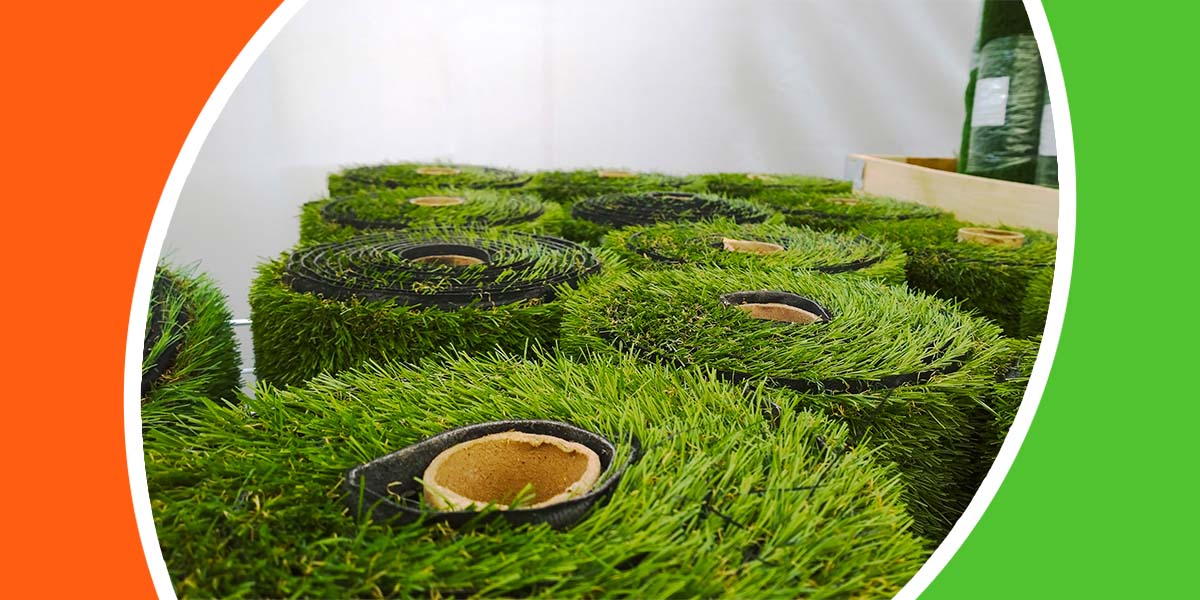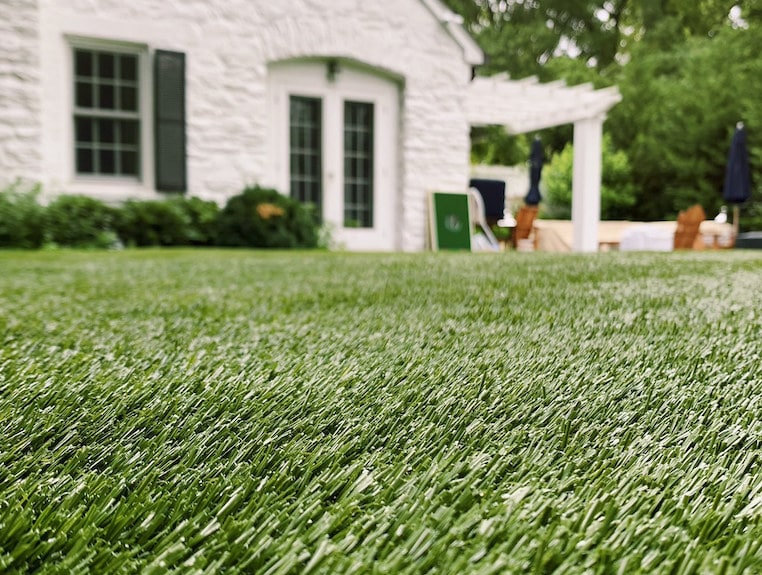Explore the Environmental Perks of Opting for Artificial Grass Solutions
The fostering of synthetic grass remedies offers an engaging opportunity to attend to pushing environmental difficulties. By dramatically reducing water usage and lessening the application of harmful chemicals, these alternatives not only advertise lasting landscaping but also secure local ecosystems. The reduced carbon footprint connected with reduced maintenance tasks contributes to a more sustainable technique to land monitoring. The ramifications of these advantages prolong beyond plain conservation efforts, elevating questions regarding their long-lasting effect on habitat conservation and overall ecological equilibrium. Discovering these dimensions exposes a complicated interaction worth considering.
Water Preservation Advantages
One of the most significant benefits of fabricated grass is its capability to conserve water. In comparison, fabricated lawn does not need watering, dramatically decreasing the total demand for water resources.
By eliminating the demand for normal watering, synthetic grass adds to sustainable landscape methods and aids mitigate the ecological effect of extreme water intake. Additionally, the conservation of water includes the decrease of overflow, which can lead to dirt erosion and waterway air pollution.
In addition, the setup of synthetic grass permits homeowners and communities to assign water resources extra successfully, concentrating on vital uses such as alcohol consumption water and agriculture. The change in the direction of synthetic grass not only advertises accountable water usage however likewise lines up with more comprehensive environmental goals targeted at preserving natural resources.
As communities progressively prioritize sustainability, the water conservation advantages of artificial turf offer an engaging instance for its fostering in property and commercial landscape design projects.
Minimized Chemical Usage
The shift to fabricated grass dramatically reduces the reliance on chemical treatments typically made use of in all-natural turf maintenance. Conventional grass monitoring typically involves the application of herbicides, chemicals, and plant foods to advertise growth and control insects. These chemicals can position dangers to human health and wellness, neighborhood wild animals, and the environment, contributing to soil and water contamination.
In comparison, synthetic grass gets rid of the requirement for these harmful materials. Once mounted, it needs very little maintenance, largely consisting of normal cleaning and infrequent infill replenishment. This reduction in chemical usage not just profits the prompt setting however additionally adds to wider ecological stability. By reducing the launch of synthetic compounds right into the environment, synthetic grass advertises healthier soil and water supply.
Moreover, the absence of chemical overflow related to synthetic grass installations assists safeguard local rivers from contamination, supporting aquatic life and keeping biodiversity. Artificial turf companies phoenix. As areas progressively prioritize lasting methods, choosing synthetic grass offers a practical solution that straightens with environmental conservation goals. Via this shift, building proprietors can take pleasure in lavish environment-friendly spaces without compromising eco-friendly health, paving the method for a more lasting future
Reduced Carbon Impact

Furthermore, the installation of synthetic grass can result in substantial water preservation. All-natural grass require considerable quantities of water for irrigation, which not only contributes to the carbon impact related to water removal and treatment yet also stress neighborhood water resources. In contrast, synthetic grass needs very little maintenance, requiring no watering, therefore dramatically lowering water usage and its connected energy expenses.
In addition, the longevity of artificial lawn contributes to its decreased carbon effect. With a life expectancy of approximately 15 years or even more, the demand for frequent replacements is decreased, leading to much less waste and lower power intake in manufacturing and disposing of typical yard options. On the whole, artificial lawn offers a sustainable alternative for eco mindful landscape design.
Environment Preservation
Environment preservation is a crucial consideration in the dispute over landscape design choices, particularly when comparing fabricated lawn to all-natural grass. All-natural yard lawns usually call for considerable maintenance, including great site using herbicides, fertilizers, and chemicals, which can negatively impact neighborhood ecological communities. These chemicals can leach into the soil and waterways, harming native vegetation and animals and interfering with neighborhood environments.
In comparison, man-made grass offers a possibility to minimize the eco-friendly impact of landscape design. By selecting artificial turf, property owners can reduce the interruption of all-natural habitats connected with conventional grass treatment practices. Fabricated lawn removes the requirement for harmful chemicals, therefore protecting nearby wildlife and preserving the integrity of surrounding ecosystems. The setup of artificial grass can lead to the conversion of former lawn areas into more biodiverse landscapes, such as pollinator yards or native plant areas, which can sustain local wild animals.
Eventually, the transition to fabricated lawn not only saves water and decreases maintenance efforts but likewise fosters an extra unified partnership between human activities and the natural surroundings, advertising environment conservation in the procedure.
Long-Term Sustainability
Long-term sustainability is an essential consider evaluating the benefits of artificial grass over conventional lawn lawns. Among the most significant advantages of synthetic grass is its sturdiness; it can last up to 15-20 years with marginal maintenance, whereas all-natural turf needs regular reseeding and replacement. This durability decreases the need for consistent sources, such as water, plant foods, and pesticides, which are vital for keeping a healthy grass yard.
In addition, synthetic grass adds to a decrease in carbon exhausts connected with yard treatment tools. Conventional yards frequently call for gas-powered lawn mowers, trimmers, and blowers, all of which add to air contamination. Turf installation phoenix az. On the other hand, synthetic grass eliminates the requirement for such equipment, advertising a cleaner environment
Furthermore, the production of fabricated lawn increasingly uses recycled materials, boosting its sustainability profile. As manufacturers adopt eco-friendly practices, the environmental impact of synthetic grass proceeds to decrease.

Final Thought
The fostering of synthetic grass remedies provides considerable environmental benefits, including considerable water conservation, decreased dependence on damaging chemicals, and a lower carbon impact. Artificial Continued turf help in protecting natural habitats by minimizing land disturbance and advertising lasting sustainability with the usage of resilient materials. Collectively, these elements emphasize the capacity of synthetic grass to contribute favorably to environmental health and provide a practical option to traditional landscaping practices in a significantly resource-conscious globe.
In comparison, man-made turf does not require watering, significantly minimizing the general need for water sources. By minimizing the release of artificial compounds right into the environment, artificial lawn promotes much healthier dirt and water systems.
In addition, the setup of fabricated turf can result in significant water preservation. In contrast, fabricated turf requires advice marginal maintenance, needing no watering, therefore substantially decreasing water usage and its associated energy prices.
